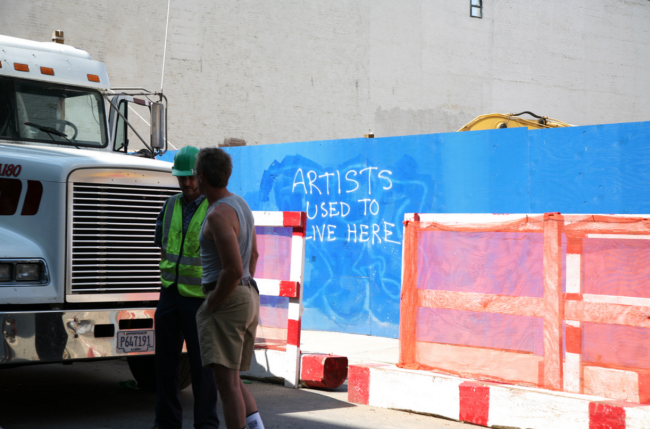How NYC's cultural institutions make neighborhoods healthier

The Brooklyn Museum. Aaron Williamson
By now it's no secret just how valuable New York City's cultural institutions are, enriching their host neighborhoods and boosting the city's economy. And according to a new study published by researchers at the University of Pennsylvania's School of Social Policy and Practice, there's also a strong correlation between the presence of museums, theaters, entertainment venues, bookstores, and other creative spaces with positive health outcomes for New Yorkers who live near them.
The report's authors, Mark J. Stern and Susan C. Seifert, began by creating an inventory of cultural institutions and examining existing data about well-being in the surrounding neighborhoods; they also interviewed residents to add local voices to the study.
Unsurprisingly, the parts of NYC with the most artistic assets also tended to be the most affluent: "The neighborhoods with the highest cultural concentrations have per capita income nearly twice the citywide average, much lower poverty rates, and higher numbers of college graduates and nonfamily households," the authors note.
Take the Upper West Side, for instance, home to multiple major cultural institutions like Lincoln Center, the Museum of Natural History, Symphony Space, and more, where the area median income is almost $100,000, according to WNYC. In Corona, Queens, by comparison, the area median income is about half that, per City Data; the report's authors identified it as a neighborhood with historically few cultural resources.
It can be difficult to discern whether cultural centers bring positive outcomes, or whether they choose to locate themselves in already affluent neighborhoods where the baseline well-being of locals is high. But a look into the history of our most established institutions indicates that they, too, helped shaped their surroundings when they arrived. Lincoln Center, for instance, was built as part of an urban renewal project in the 1950s, and 6sqft writes that before it debuted, NYCHA considered its neighborhood "the worst slum section in the City of New York."
Clearly, the West 60s are a very different place today, though some would argue that the area—the same place that inspired West Side Story—lost cultural value when its revitalization forced out many low-income people of color.
But the study suggests that when lower-income neighborhoods expand their artistic and cultural resources, locals benefit significantly. In fact, the study's authors found that in these areas, the presence of cultural assets has a stronger correlation with good health outcomes than they do in the wealthier corners of New York. Poorer areas that have cultural resources showed lower rates of child abuse and neglect, teen pregnancy, obesity, and crime than those that don't; in these same spots, 18 percent more children scored in the top tier on English and math exams.
Cultural assets are one factor among many; the authors also identify economic opportunity and poverty reduction as other factors connected to health outcomes. Still, what they have uncovered is a relationship between cultural assets and social well-being, and, they write, taking "a multi-dimensional view of social wellbeing points to other ways to improve the lives of New Yorkers."
In Corona, for instance, residents have benefited from programming at the recently renovated Queens Museum. The report notes that museum staff works with local groups on projects that integrate artistic expression and social justice, such as Mujeres, a dance group that also engages in activism around immigration rights. "With Queens Museum," the study authors write, "voice is expressed as cultural value, and engaging community means creating a cultural environment that leads to change."
The study's authors are careful to note that their findings don't mean that adding more museums or concert halls to a neighborhood is guaranteed to directly improve health. Rather, they write:
Cultural assets are part of a neighborhood ecology that promotes wellbeing. At its base, our hypothesis is that social connection is the key to the improvements in social wellbeing that we’ve documented. A neighborhood’s cultural ecology is one means through which social connection is fostered, and our findings are the results of culture’s contribution to social connection."
The city's Department of Cultural Affairs is persuaded by these findings, Crain's reports, and will use the study to help develop its first ever cultural plan for NYC. According to a press release, this plan, to be presented to the City Council in July, will focus on "expanding access to cultural opportunities for all New Yorkers"—which could also help bolster their all-around well-being, too.
You Might Also Like



























